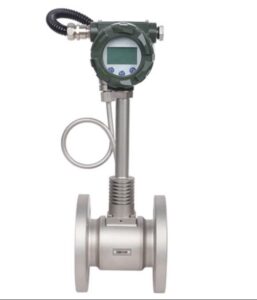Implementing dynamic, data-driven personalization in email marketing is no longer optional but essential for maximizing engagement and conversions. While segmentation and content rules are foundational, the true power lies in real-time data integration—ensuring each email reflects the latest customer actions and preferences. This article offers an expert-level, actionable guide to setting up and optimizing real-time data feeds, handling data latency, and deploying personalized content at scale, grounded in advanced technical practices and real-world case studies.
Contents
Setting Up Real-Time Data Feeds Using APIs and Webhooks
The cornerstone of real-time personalization is establishing a robust data pipeline that captures customer actions instantaneously. The most effective approach involves leveraging APIs and webhooks—technologies designed for event-driven data transfer.
Step-by-Step Implementation
- Identify Key Data Events: Determine which customer actions should trigger personalization updates—e.g., page views, cart additions, purchase completions, or app interactions.
- Configure Webhook Endpoints: Set up secure endpoints (e.g., REST API endpoints) on your server to receive webhook notifications. Use HTTPS with proper authentication (OAuth, API keys) to prevent unauthorized access.
- Register Webhooks with Data Sources: In your CRM, website backend, or app platform, register webhook URLs to listen for specific events. For instance, Shopify, Segment, and Stripe support webhook subscriptions out-of-the-box.
- Implement Event Handlers: Develop server-side handlers to process incoming webhook payloads. Parse data (JSON or XML), validate authenticity, and store relevant attributes in your customer data platform.
- Establish API Polling or Streaming: For data sources lacking webhook support, set up periodic API polling using REST or GraphQL, optimized with incremental data retrieval methods (e.g., cursor-based pagination).
Expert Tip: Use message queuing systems like Kafka or RabbitMQ to buffer incoming data, smoothing bursts and ensuring no events are lost during traffic peaks.
Synchronizing Data Updates with Email Marketing Platforms
Real-time data collection is only effective if seamlessly integrated with your email platform—such as Mailchimp, SendGrid, or HubSpot. Achieving this synchronization requires deliberate API integration strategies.
Best Practices for Data Synchronization
| Method | Advantages | Considerations |
|---|---|---|
| API Push | Immediate updates; reduces latency | Requires webhook setup; error handling complexity |
| API Polling | Simpler to implement; controlled frequency | Potential latency; API rate limits |
To optimize synchronization:
- Set appropriate polling intervals: Balance between real-time needs and API rate limits; e.g., polling every 5 minutes for less critical data.
- Implement webhooks wherever possible: They provide event-driven updates, reducing delays and server load.
- Use IDs and timestamps: Track last update times to fetch only changed data, minimizing API calls.
Handling Data Latency and Ensuring Consistency in Personalization
One of the most nuanced challenges in real-time personalization is managing data latency—delays between user actions and their reflection in email content. Latency can lead to irrelevant recommendations or outdated offers, damaging trust and engagement.
Strategies to Minimize and Manage Latency
- Prioritize Critical Data: For high-impact personalization (e.g., abandoned carts), ensure real-time updates via webhooks, avoiding polling delays.
- Implement Data Versioning: Assign version numbers or timestamps to data snapshots. During email rendering, compare current data version to what was available at send time, preventing inconsistencies.
- Use Edge Caching and CDN: Store recent data close to the email platform to reduce fetch times, especially when pulling data from external sources.
- Design for Graceful Degradation: If real-time data isn’t available, fall back to the most recent stable data, with clear indications to the user (e.g., “Based on your recent activity”).
“In practice, a combination of webhook-driven updates for critical data and periodic polling for less urgent information strikes the best balance between freshness and system performance.”
Case Study: Real-Time Product Recommendations in Email Campaigns
A leading online retailer integrated real-time data feeds into their transactional email system to personalize product recommendations dynamically. They used:
- Webhook notifications: Triggered whenever a customer viewed or added an item to the cart.
- API sync with their recommendation engine: Pulled the latest browsing history and cart contents every 2 minutes.
- Dynamic email templates: Powered by Liquid syntax, rendering product blocks based on the freshest data.
The result was a 25% lift in click-through rate and a 15% increase in conversions, demonstrating the tangible benefits of robust real-time data integration. Key technical lessons included setting up reliable webhook endpoints, managing data consistency with timestamps, and optimizing API call frequency to prevent delays.
“Prioritizing webhook infrastructure and timestamp validation was crucial. Without it, we faced discrepancies between customer actions and recommendations, eroding trust.”
Final Tips and Strategic Considerations
Successfully deploying real-time personalization requires a blend of technical rigor and strategic foresight. To maximize ROI:
- Invest in scalable infrastructure: Use cloud-native services like AWS Lambda, API Gateway, and managed message queues to handle variable data loads.
- Implement rigorous error handling and fallback protocols: Prevent personalization failures from degrading user experience.
- Monitor data freshness and latency metrics: Use dashboards to track API response times, webhook success rates, and data update delays.
- Align data strategy with overall marketing goals: Prioritize customer behaviors that drive revenue, and avoid overloading emails with extraneous data that could cause delays or confusion.
- Create a continuous improvement cycle: Regularly review data integration performance, update webhook subscriptions, and refine synchronization schedules based on observed latency and campaign performance.
For foundational insights on broader personalization tactics, consider exploring the {tier1_anchor}. Meanwhile, for a comprehensive overview of targeted segmentation strategies, review our detailed guide on {tier2_anchor}.
Implementing these advanced data integration techniques will position your email campaigns at the forefront of personalization innovation, delivering more relevant, timely, and engaging customer experiences that drive long-term loyalty and revenue.








